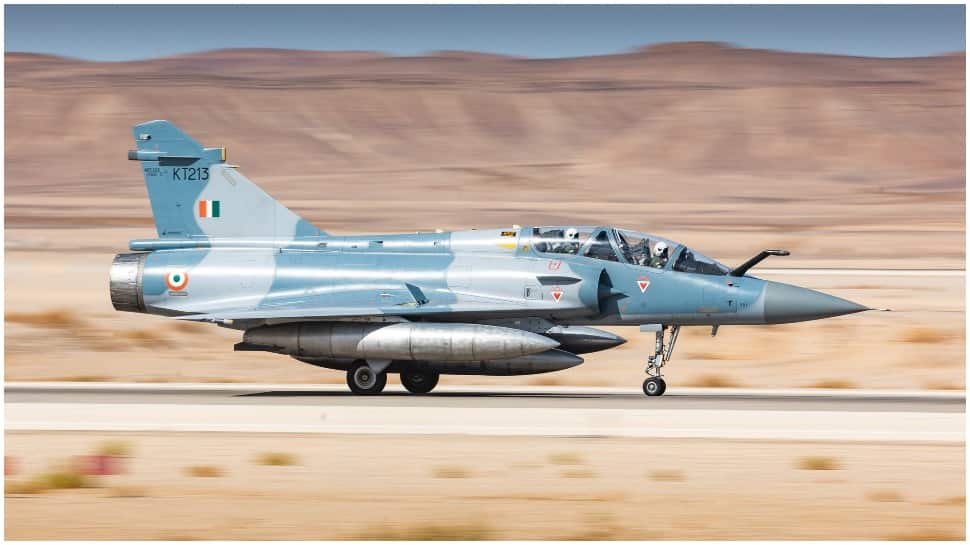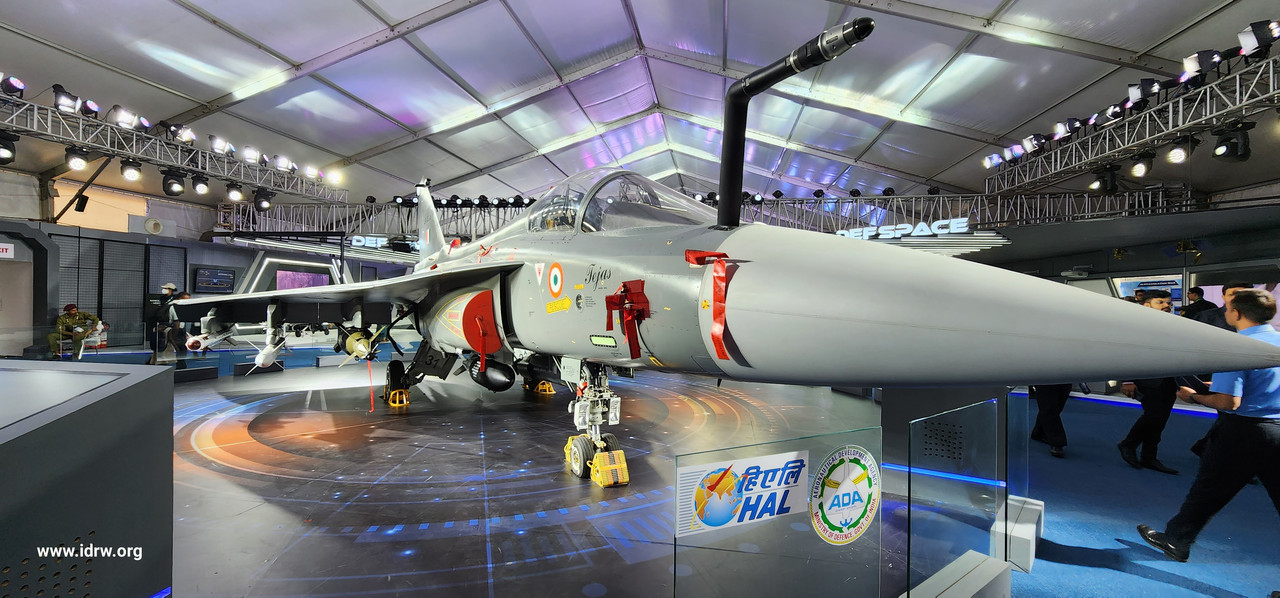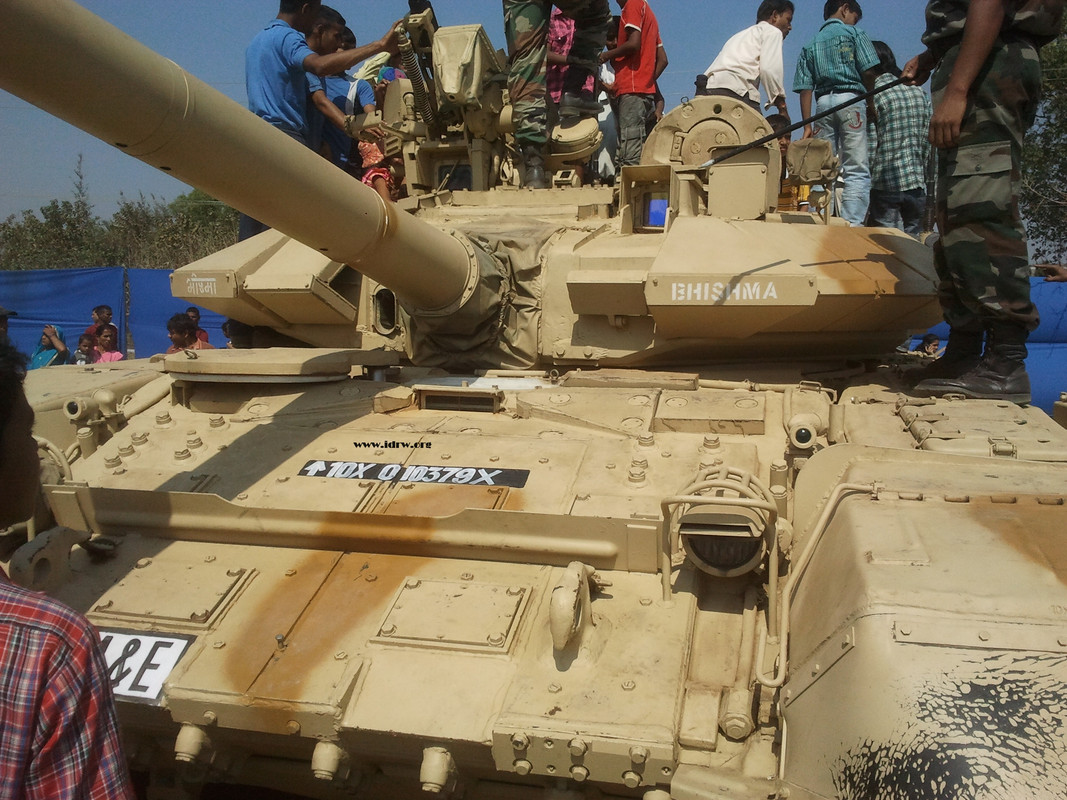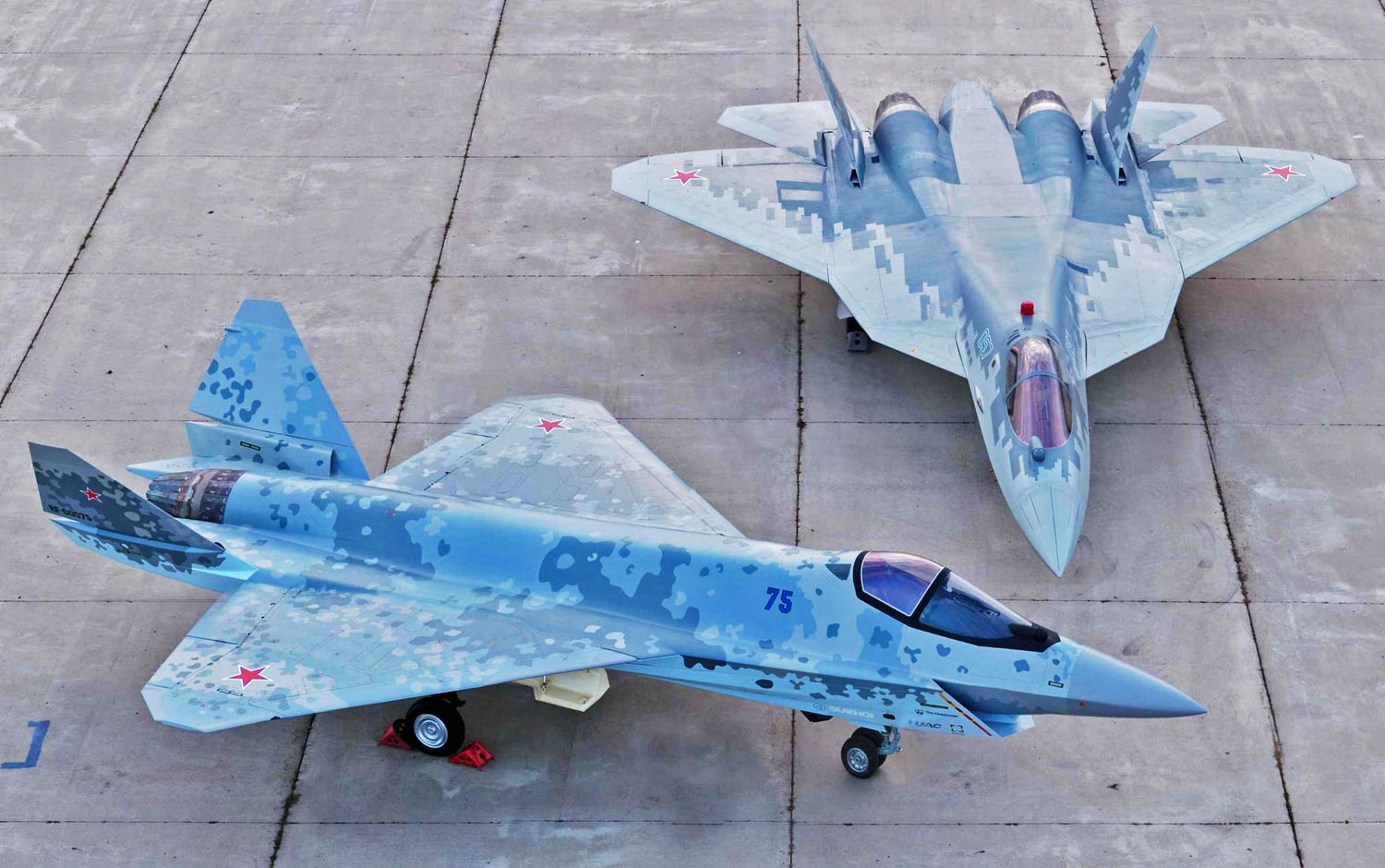Idrw Team
SOURCE: IDRW.ORG TEAM


In a testament to India’s growing prowess in the field of space technology, three innovative Indian space startups have secured a coveted spot on the list of “20 Emerging SpaceTech Startups to Watch in 2024.” The list, compiled by Austria-based StartUs Insights, an innovation intelligence company, recognizes promising ventures that are set to make significant contributions to the rapidly evolving space industry.
1. OrbitAID: Pioneering Orbital Fuel Stations
Continue readingSOURCE: IDRW.ORG TEAM


In a significant stride towards enhancing its national security, India’s Ballistic Missile Defense (BMD) coverage is visibly expanding, with recent developments indicating an extension to major cities in the southern region. The expansion comes on the heels of the completion of Phase I, which saw the installation of a Long-Range Tracking Radar series in strategic locations, including Udaipur, Madhya Pradesh, Uttarakhand, and Rajasthan.
Satellite images have now confirmed a new site near Bangalore featuring the ELM-2090S Spectra, an Active Electronically Scanned Array (AESA) air defense radar. This development signifies a notable augmentation of India’s BMD coverage, originally intended for the Delhi-NCR Region and Mumbai. The extension of coverage to major cities in the south, such as Bangalore and Chennai, underscores the nation’s commitment to fortifying its defenses against potential ballistic missile threats.
Continue readingSOURCE: IDRW.ORG TEAM


Tesscorn Systems India Private Limited, a Bangalore-based innovator, is soaring into the future of Unmanned Air Vehicles (UAVs) with its biomimetic approach. By studying the highly optimized flight mechanisms of insects and birds, Tesscorn is unlocking the secrets of nature for next-generation UAV and Micro Air Vehicle (MAV) design.
At the heart of Tesscorn’s work lies Fluid-Structure Interaction (FSI) investigations. LaVision’s cutting-edge FSI system allows them to simultaneously analyze both the fluid flow around the wings and the wings’ structural deformation and strain. This powerful combination of synchronized Particle Image Velocimetry (PIV) and Digital Image Correlation (DIC) measurements provides invaluable insights into the complex interplay between wing movement and airflow.
Continue readingSOURCE: IDRW.ORG TEAM


India’s state-owned Mazagon Dockyard Shipbuilders Limited (MDL) is optimistic about securing a contract for three additional Scorpène submarines for the Indian Navy by the end of 2024. This follows their recent submission of a commercial offer on December 11th. As per information obtained by idrw.org, the first submarine delivery is anticipated from 2031 onwards.
These three follow-on Scorpènes will be advanced versions of the six submarines already in production. They will incorporate the indigenously developed Air Independent Propulsion (AIP) system by DRDO, replacing several outdated subsystems with newer technologies.’
Continue readingSOURCE: IDRW.ORG TEAM


Indian Air Force (IAF) has set its sights on procuring additional Mirage 2000 aircraft, specifically the Twin-Seater variant. This decision comes in the wake of a recent accident that resulted in the loss of one Mirage 2000 aircraft, prompting the need for replacements. The IAF’s commitment to maintaining and enhancing its operational strength is evident in this pursuit of additional Mirage 2000s.
The Mirage 2000 has been a mainstay of the IAF for over three decades, forming the backbone of three squadrons stationed at the Gwalior airbase. These versatile multirole fighters have played a crucial role in various conflicts, including the Kargil War and the Balakot airstrikes. Currently, India operates around 50 Mirage 2000s, with plans to keep them operational until at least 2035.
Continue readingSOURCE: IDRW.ORG TEAM


The Year End Review confirmed that the NGCCM, identified as the ASRAAM, was successfully tested for the first time in 2023. While the specific aircraft used for the test was not disclosed in the report, it was revealed that the IAF selected the SEPECAT Jaguar Darin-III fighter jets for equipping with this advanced missile system. Additionally, plans are underway to incorporate the NGCCM into the formidable Su-30MKI, a testament to the versatility and adaptability of this cutting-edge weapon.
The ASRAAM, weighing 88 kg, is a Within-Visual-Range (WVR) dominance weapon designed to excel in close combat scenarios. With an impressive range of over 25 km, the missile accepts target information from aircraft sensors such as radar or helmet-mounted sights. Notably, the ASRAAM can also operate autonomously using its infrared search and track system, offering a multi-faceted approach to air-to-air engagements.
Continue readingSOURCE: IDRW.ORG TEAM


The Yeddumailaram Ordnance Factory in India has increased its production of amphibious infantry combat vehicles (ICVs) to meet the requirements of the Indian Army. The factory is now manufacturing 120 BMP-2 ICVs per year.
The BMP-2 is a Soviet-designed infantry fighting vehicle that is used by the Indian Army and other armed forces around the world. It is a tracked vehicle that can carry seven troops and their equipment. The BMP-2 is armed with a 30mm cannon, a 7.62mm machine gun, and an ATGM launcher.
Continue readingSOURCE: IDRW.ORG TEAM


The Indian Air Force (IAF) is gearing up for a major expansion of its fighter jet fleet, with both the advanced Tejas Mk1A and the next-generation Tejas Mk2 programs gaining momentum. The IAF has confirmed plans to order 97 additional LCA-Tejas Mk1A fighter jets, on top of the 73 already ordered in 2021.
This brings the total number of Mk1A jets to 170, significantly bolstering the IAF’s fleet of indigenous fighter aircraft. In addition to 36 older Mk1 and 18 LCA-Tejas Trainer. The increased production rate will see HAL scaling up production from the current 8 aircraft per year to 24 by 2026, ensuring timely delivery of the new jets.
Continue readingSOURCE: IDRW.ORG TEAM


The Indian Army’s formidable T-90 tanks are about to get even more potent. The Defence Acquisition Council (DAC) has approved the integration of two cutting-edge technologies: the Digital Ballistic Computer (DBC) and the Automatic Target Tracker (ATT). This upgrade promises a significant leap in accuracy and battlefield effectiveness.
Gone are the days of meticulously manual tank positioning. The ATT eliminates this time-consuming process, automatically tracking enemy tanks with unwavering precision. This crucial advantage allows for quicker engagement and a higher chance of hitting the target first.
Continue readingSOURCE: IDRW.ORG TEAM


The Indian Ministry of Defence (MoD) year-end review has revealed a significant development: the successful flight test of a Long-Range Anti-Ship Missile (LRASM) capable of engaging warships at extended distances. While details remain under wraps, this test marks a crucial step towards bolstering India’s maritime prowess.
Details surrounding the weapon are scarce, with the MoD report only confirming the test date (February 21st, 2023) and location (Integrated Test Range, Balasore, Odisha). The ambiguity leaves open the possibility of this LRASM being either a land-based or submarine-launched variant. However, considering the February test of a 402km-range Submarine Launched Cruise Missile (SLCM), speculation naturally arises about a potential connection.
Continue readingSOURCE: IDRW.ORG TEAM


India’s Bharat Dynamics Limited (BDL) is expressing optimism about securing export orders for its indigenously developed Astra Mk1 Beyond Visual Range Air-to-Air Missile (BVRAAM) and Smart Anti-Air Weapon (SAAW) systems. BDL officials are currently in talks with several countries that have shown strong interest in these advanced weapons, potentially marking a significant milestone in India’s defense exports.
The Astra Mk1 has been actively promoted to operators of Su-30 and MiG-29 fighter jets, offering a compelling alternative to the Russian-developed R-77 BVRAAM. BDL highlights several key advantages of the Astra, including:
Continue readingSOURCE: IDRW.ORG TEAM


In a pursuit of knowledge and cross-cultural exchange, a delegation from the Indian Air Force Test Pilots School (IAFTPS) recently embarked on a study tour to the National Test Pilot School (NTPS) in the heart of California’s Mojave Desert. Led by the Officer Commanding IAFTPS, the group, comprising the Deputy Schoolmaster and students of the 45th Flight Test Course, delved deep into the world of American test flying, forging valuable connections and enriching their understanding of this critical domain.
The IAFTPS, established in 1957, is a premier institution responsible for training India’s elite test pilots, who push the boundaries of aviation technology and ensure the operational readiness of the Indian Air Force’s diverse aircraft fleet. The NTPS, founded in 1961, boasts a similarly prestigious reputation, having trained generations of American test pilots who have shaped the course of aerospace history.
Continue readingSOURCE: RAUNAK KUNDE / NEWS BEAT / IDRW.ORG


India’s pursuit of acquiring 114 Multi-Role Fighter Aircraft (MRFA) has encountered significant hurdles, prompting the Standing Committee on Defence for the year 2022-23 to suggest contingency plans in case of further delays. With the procurement process at an advanced stage, concerns about potential setbacks akin to past projects, such as the Light Combat Aircraft (LCA) or Kaveri engine, has advised the government to consider alternative options. The possibility of acquiring state-of-the-art fifth-generation fighter aircraft over the counter has emerged as a potential solution to maintain the nation’s defense capabilities without prolonged delays.
The prolonged delays in the issuance of the Request for Proposal (RFP) for the MRFA tender have raised concerns within the defense establishment. The Standing Committee on Defence has wisely advocated for a proactive approach, suggesting that if the current procurement process faces further setbacks, the government should explore alternative avenues to ensure the Indian Air Force (IAF) remains well-equipped and ready to address emerging security challenges.
Continue readingSOURCE: IDRW.ORG TEAM


The Indian Army has unveiled a groundbreaking in-house innovation: a multipurpose octocopter designed to enhance its operational capabilities in challenging high-altitude environments. This versatile drone platform offers a range of functionalities, including:
Continue readingSOURCE: IDRW.ORG TEAM


According to a report by Zee Business, India’s defense prowess receives a major boost as Armenia inks a deal to acquire the Akash Air Defence System and 15 AAD Systems from Bharat Dynamics Limited (BDL). This crucial government-to-government agreement, estimated to be valued between Rs 5,000 crore and Rs 6,000 crore, marks a significant development in India’s defense exports and strategic partnership with Armenia.
The Akash Air Defence System is a medium-range surface-to-air missile system designed and developed by India’s Defence Research and Development Organisation (DRDO). It is capable of engaging aerial targets at a range of up to 25 kilometers and an altitude of 18 kilometers. The system can track and destroy multiple targets simultaneously, making it a formidable shield against aerial threats.
Continue reading